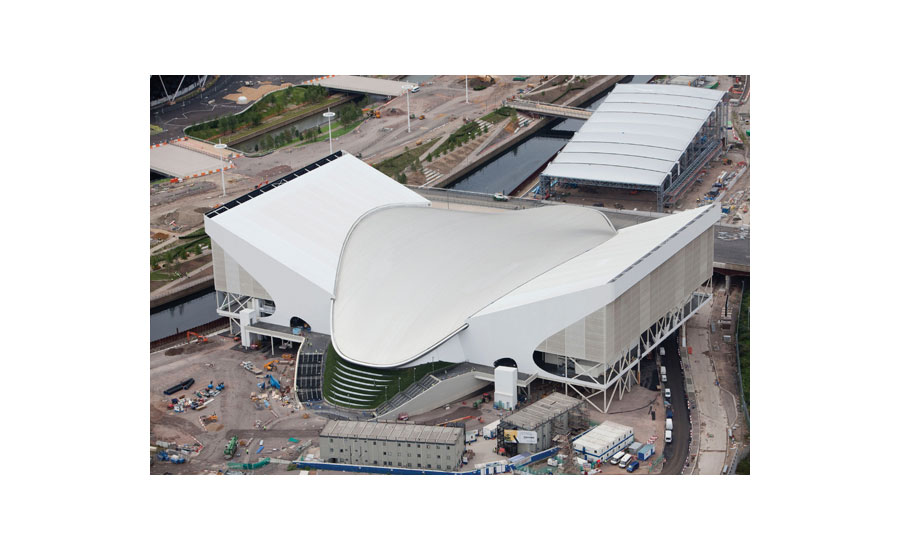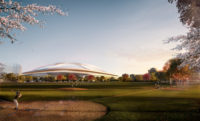Critics Take Jabs at Zaha's Olympic Stingray

Large raked wings with temporary seating areas extend out on either side of the stingray roof. These wings will be taken down after the Olympics, while the rest of the building will remain.
Photo © Olympic Delivery Authority
Architects & Firms
Although the last of the permanent structures to be finished in the 500-acre Olympic Park (after Populous' main stadium, Hopkins Architects' Velodrome, arenas for handball and basketball, and the International Broadcast Center), the Aquatics Centre has been the most eagerly anticipated structure. Hadid’s bold early design for the project, which served as a part of London's Olympic bid in 2005, helped win the Games for the city.
More than 3,000 tons of structural steel went into the Aquatics Centre's sweeping roof — about 10 times the amount, needed for the Velodrome's cable-net roof, which has only a slightly smaller span. However, Jim Heverin, associate director of Zaha Hadid Architects, defended the firm's design, saying, "The roof’s wave form differentiates the diving from the pool area." He added that "the necessary spans and loadings dictated the structure. Our prime concern was in ensuring a column-free space." To do this the aluminium-clad roof could bear off only three points — a wall on the south and two cores to the north. "These constraints forced the steel structure to work harder," he explained.
The raked PVC-clad seating wings dominating the current Games-mode configuration also elicited wide criticism, since their form seems so different from the rest of the structure's stingray roof. At the press briefing for the opening of the building, Hadid justified these elements, saying, "The stands were only ever seen as something temporary," She added that ‘the final legacy mode will integrate the building more into the landscape — and that is how I wanted it." The Aquatics Centre will seat 17,500 spectators during the Olympics, but only 3,000 once the stands are removed and glazed walls are installed overlooking the park on the east and west.
Hyped as the key building of the Olympic Park complex, the Aquatics Centre has instead found itself fighting for attention with the Velodrome, which cost just $152 million and has received much critical praise for its spare structural design. British critics have cited the Velodrome as the odds-on favourite to win this year’s RIBA Stirling Prize. But Hadid brushed off any hint of living in its shadow. "Ours is the second biggest venue [the main stadium is bigger], holding three times the Velodrome’s capacity [in Games mode], so they are not really comparable," she said. "And anyway, the park is big enough for two or three good projects. [Ours] is not the only beauty queen here."



